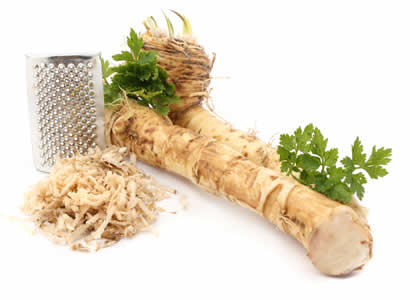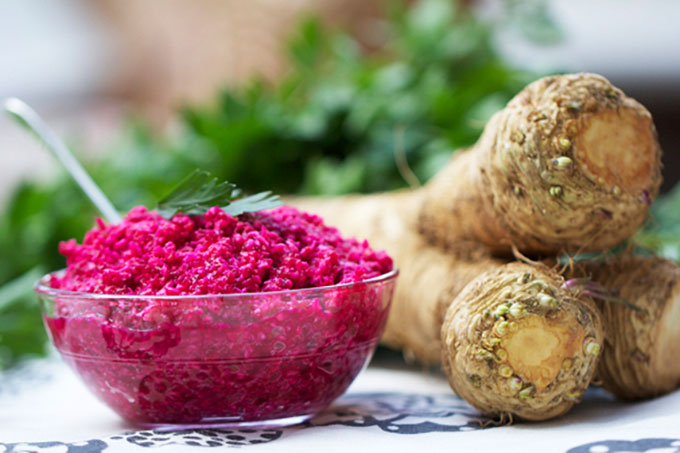Why horseradish is a must on a Polish Easter table? Posted by Kasia on Apr 12, 2017 in Culture, Religion
Easter (Święta Wielkanocne) is a happy holiday, an affirmation of life for Christians all over the world. Most people everywhere celebrate it with joy. Tears are also a part of the Polish tradition, although crying isn’t so much because of the emotion… It’s the horseradish of course!
Horseradish is a symbolic food on the Easter table that affects tear ducts as onions do. Grating the root is pretty much like chopping onions. It’s not a job that most people enjoy, but it’s good for your sinuses, right? I have to say I really like horseradish, especially ćwikła, which is horseradish (chrzan) mixed with red beets:) Yum! My mother always used to make her own ćwikła (just liked she did everything else herself from the scratch in the kitchen – I was very lucky) and it was simply the best.
Here you can find a great ćwikła recipe (przepis na ćwikłę). I have never made it by myself, but definitely have to try soon. It’s yummy by itself, on a sandwich, a side dish…anyway you want it!
I remember that when priest was blessing the food on Holy Saturday at my grandparents’s house, there was a plate with hardboiled egg sliced in wedges. In between each piece of egg there was a tiny piece of raw horseradish root and we were supposed to try one of each. I also remember that all the kids were giggling in the corner, watching the priest (ksiądz) trying the chrzan…and waiting for him to shed some tears…
Horseradish is a plant with a lot of history, dating back to at least 1500 B.C.. Ancient Greeks believed it to be an aphrodisiac. While the Jews were in Egypt, horseradish was designated as one of the bitter herbs on the Seder table at Passover and remains part of that celebration today. Horseradish use spread throughout Europe as a medicinal plant in the middle ages, and gradually rose in popularity as a condiment. Colonial settlers that moved to the North America brought their horseradish with them.
Researchers hypothesize that glucosinolates increase the body’s ability to detoxify cancer-causing compounds and suppress cancer growth in the body. The levels of these chemicals in horseradish are more than ten times that of broccoli. So just a little bit of horseradish goes a long way in providing these beneficial compounds.
Recent research from University of Illinois has identified compounds in horseradish that may have anti-cancer properties. These compounds, known as glucosinolates, have also been found in cruciferous vegetables such as broccoli, cabbage, and Brussels sprouts, relatives of horseradish. Whether horseradish proves to be a ‘miracle food’ or not remains to be seen. Nonetheless it is still a great addition to many meals and a food that has a lot of history in the world.

Build vocabulary, practice pronunciation, and more with Transparent Language Online. Available anytime, anywhere, on any device.





